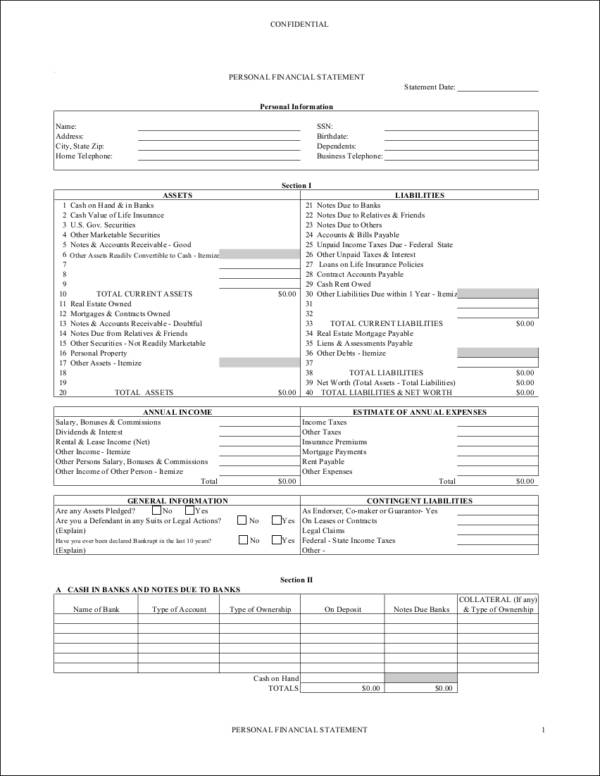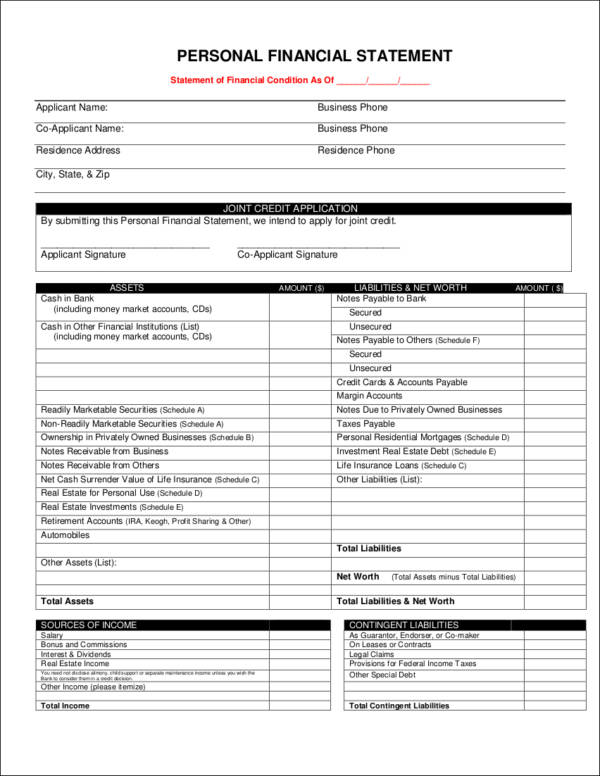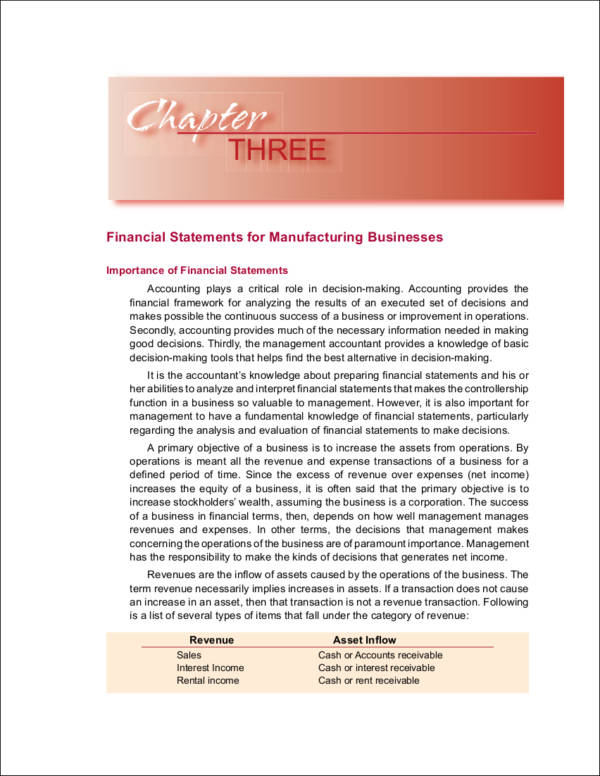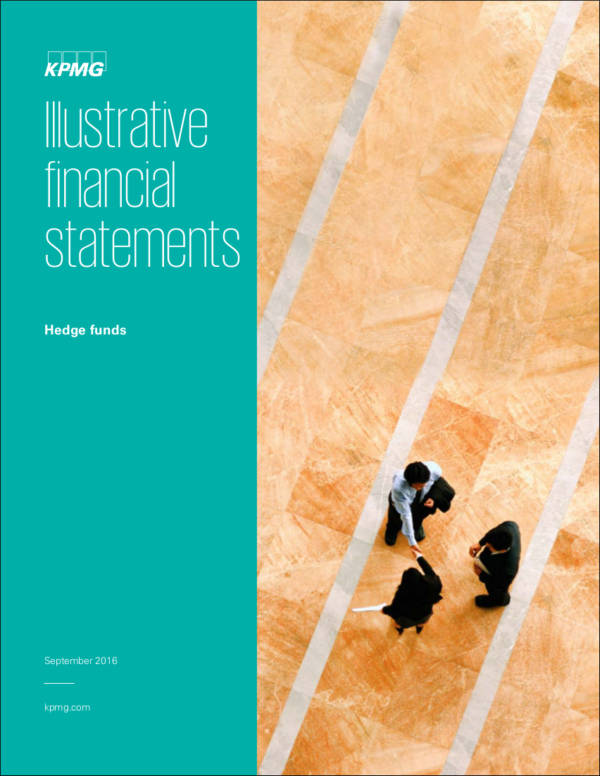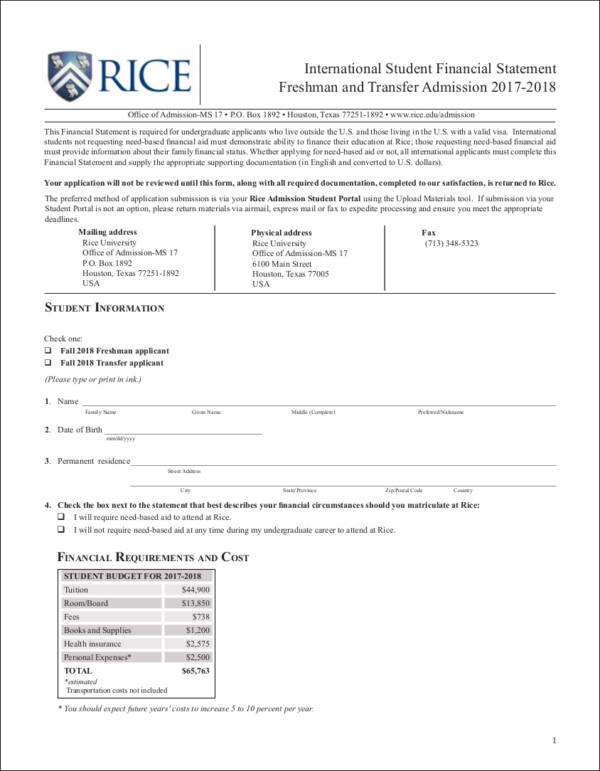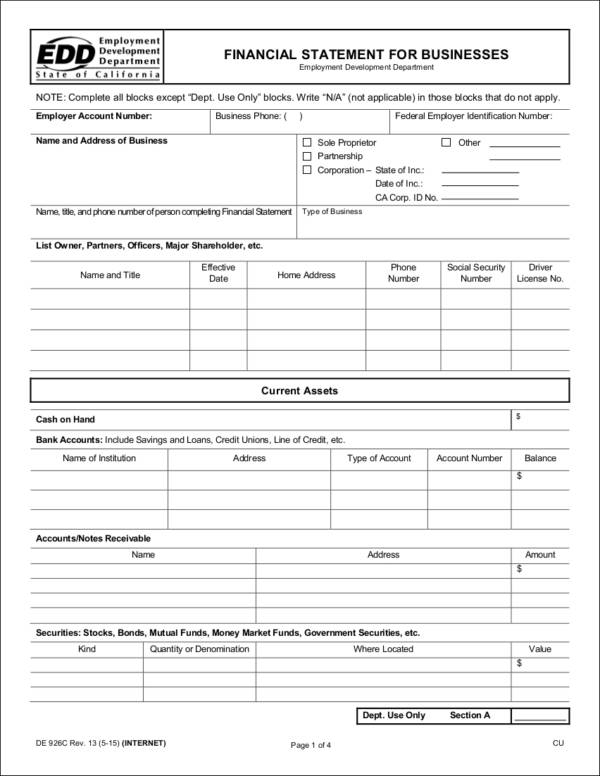A company’s finances are an important aspect of every business, whether you are starting a small business or you own a large corporation. Organizations, businesses, and other entities need to keep track of the financial status that the business is currently in. Understanding the financial position of the business or company is important and is necessary for the daily operations of the business. If a company is financially healthy, they will be able to get the funding that they may need from various investors and lending companies.
In order to accurately track an organization’s financial status, you will need a document or a tool. You can do this through the use of a financial statement. In this article, we have provided a number of important information such as the steps in creating a financial statement, essential tips, and the necessary elements that you need in your document. You can use them as a reference to help you effectively create your financial statement. You can also choose from the 10 samples and templates in this article of various financial statements to help you out with the format and structure of your document.
Blank Personal Financial Statement Template
Nonprofit Financial Statement Template
School Financial Statement Sample
Generic Personal Financial Statement Template
What Is a Financial Statement?
A financial statement is a document or tool that is used by businesses and other entities to come up with accurate information and data to determine the financial standing of a particular company. A financial statement is a formal document that outlines the various financial activities of the business or entity. Companies need to gather all the essential information and data based on the financial documents that a company has. A financial statement includes information of a company’s assets, liabilities, income, expenses, cash flow, etc.
Why Do Businesses Need to Have Financial Statements?
The financial statements of a company provide a lot of important information. This is why it is a necessary tool in every business. The reason why a business needs to have a financial statement are as follows:
- The main purpose on why the business or entity should have a financial statement is for them to have a greater understanding of the financial conditions of the business, especially since the company’s financial conditions are the main focus of investors and lenders when financing a particular business.
- A business needs to have a financial statement to be able to identify the results of the financial activities and processes applied to the entirety of the business and the different areas of the company as well.
- It provides information about the balance that the company executes with regards to its use of finances and monetary resource allocation.
- Financial statements assure that a company has a record of its financial and accounting transactions, which can be used as a reference when assessing the sustainability of the business and the current financial conditions of the company.
- A company also needs to have a financial statement to be able to come up with the shareholders’ equity amount. The shareholder equity refers to a number of shares that investors currently have in the company or business that they have invested their money on.
- A financial statement is also used to outline the company’s cash flow, specifically their assets and liabilities. This information is useful to investors to be able to see the company’s profit and whether or not they have enough cash flow to pay for the expenses that the company will incur.
Sample Agricultural Financial Statement
Co-operative Financial Statement Sample
Manufacturing Business Financial Statement Sample
3 Essential Financial Statements for Your Small Business
An effective financial statement includes 3 essential elements. These elements should be present in every financial statement that you will be creating. To help you further understand these elements, we have provided a description of each element below.
- Balance Sheet – a balance sheet is a type of statement that provides an overview of the condition of the business. The business’ liabilities are added up with the equity to come up with the company’s current assets. In this article, you will find balance sheet templates should you need to create one.
- Profit and Loss Statement – a profit and loss statement, also commonly called as an income statement, allows businesses to estimate the sales and expenses that the company will have for a certain period of time as well as provide a data of the company’s revenues and expenses incurred.
- Cash Flow Statement – a cash flow statement defines the amount of money that goes in and out of your business. For example, cash sales, accounts receivables, loans, etc., are considered as cash inflows or the amount that is going into the company, while equipment purchased, expenses that have been paid, and other payments made by the company are considered cash outflows or the money going out of the business.
How to Create a Financial Statement
The creation of a financial statement can be intimidating, especially if you are still unaware of the processes that are needed to be considered to assure that all the information present in the document are all accurate and organized. However, knowing the simple steps in making the specified document will allow you to have an easier time in putting all details together within the financial statement. Here is how you can create a comprehensive financial statement:
- Before you start creating your financial statement, download from the financial plan templates, balance sheet template, income statement template, and a cash flow statement template. This will be useful in helping you create the different components that you will use to complete the financial statement that you are creating.
- Now that you have the templates that you will use to outline your document, gather all the information and the data that you will be incorporating into your financial statement based on the financial documents that your company has.
- In your template, write a title to indicate the type of document you are creating. In this case, write “Financial Statement” including the name of the business or organization and other essential information.
- Create a balance sheet by adding up all your assets and liabilities. Subtract the liabilities from your assets in order to come up with the shareholder’s equity. In addition, you can create a balance sheet using computer software.
- Write your income statement by starting with the net sales indicated on your balance sheet. To get the net sales, you have to come up with the gross income and deducting all the necessary deductions. The net sales represent the revenue or the total sales of the business minus discounts, returns, and other deductions.
- The next step is to write the cash flow statement. The cash flow statement outlines the amount of cash that your company currently has. Now that you have come up with the net income in your income statement, in order to get the cash flow amount, you have to look at your company’s operating costs. This will allow you to get the accurate total for the total cash flow of your company.
- Finish your financial statement by including all other necessary information.
Illustrative Financial Statement Sample
Sample International Student Financial Statement
Business Financial Statement Template
Tips for Effective and Useful Financial Statements
Running a business without an effective financial statement won’t assure the success of the business. When creating a financial statement, it is very important to have a certain standard. Here are some tips to ensure that you will be creating a useful and effective document.
- Always remember to use the right system in the business to ensure that you will have accurate results. A good financial management system will assure an effective and useful financial statement.
- Proper accounting is important, especially since it involves money. Every company should properly keep a record of the various transactions of the business to be able to have accurate data, which is necessary for an effective financial statement.
- It is important that you understand whether a particular product/s or client is profitable for the business. Being aware of this will help you stop any unprofitable work that the company is doing, which will prevent further losses.
- Set deadlines for creating financial statements. It is important you create financial statements on a regular basis to understand the financial conditions and status of the company.
- Ensure that your financial statements contain accurate information and that it is formatted in a way that individuals can understand. This is necessary since businesses require financial statements to make financial decisions. Without it, the company’s operations will not function smoothly and properly.
Elements of a Financial Statement
Just like any business document, there are certain elements that need to be present in the financial statement in order for it to be useful. Here are the main elements that every financial statement should have:
- Assets – every financial statement should include the company or organization’s assets. The assets of a particular business refer to the properties that the business owns that have monetary value. Businesses that have various assets can have a lot of benefits in the future.
- Liabilities – a company’s liabilities refer to the amount that the business owes or the financial obligations of the business. This can be money that the business has loaned from a lender or the amount that the business owes from various suppliers.
- Equity – equity refers to the total value of the company that is then divided into different parts that the various shareholders of the company currently own.
- Revenue – a company’s revenue refers to its income, which the company gets from the goods, products, and services that the business is selling to their clients and customers.
- Expenses – a company’s expenses are the amount that the business spends in order to operate the company. Some examples of expenses are salaries, depreciation, interest expenses, tax expenses, utility expenses, transportation costs, repair, etc.
Additionally, if you need a personal financial statement form, income statement samples, and other types of statements that you will need to create, you can download the samples and templates that you will find in this article and on this site.
Related Posts
FREE 10+ Scholarship Statement of Purpose Samples in PDF | DOC
FREE 10+ Engineering Problem Statement Samples [ Software, Mechanical, Civil ]
FREE 30+ Information Statement Samples in PDF | MS Word
FREE 50+ Policy Statement Samples in MS Word | Google Docs | PDF
FREE 50+ Summary Statement Samples in PDF | MS Word
FREE 10+ Nursing School Personal Statement in PDF
FREE 9+ Mortgage Statement Samples and Templates in PDF
FREE 10+ Independent Subcontractor Statement Samples in MS Word | Google Docs | Apple Pages | PDF
FREE 10+ Trust Distribution Statement Samples in PDF
FREE 14+ Compliance Statement Samples & Templates in PDF | MS Word
FREE 10+ Extension Impact Statement Samples in PDF | DOC
FREE 10+ Bank Reconciliation Statement Samples and Templates in PDF | MS Word
FREE 10+ Diversity Mission Statement Samples in MS Word | PDF
FREE 10+ Architecture Statement of Purpose Samples [ Sustainable, Graduate, Master ]
FREE 13+ Project Scope Statement Samples in PDF | MS Word

